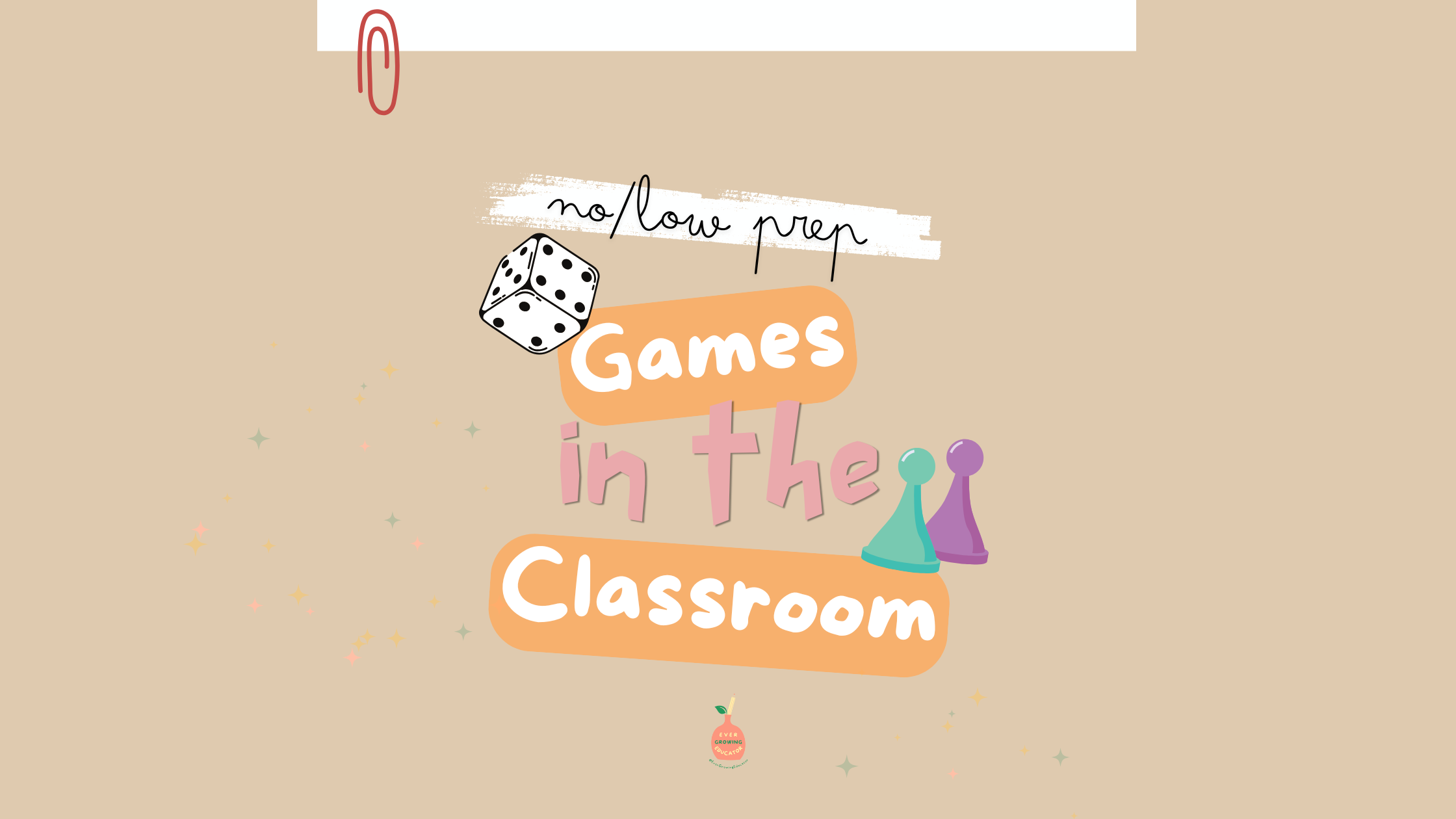10 No/Low Prep Classroom Games You Can Adapt for Any Subject!
Games aren’t just for recess—they’re an awesome way to make learning engaging, memorable, and fun. Plus, they don’t have to be complicated or tech-heavy. Here are ten simple, no or low prep games that you can start using right away. They’re adaptable to just about any subject, and whether you’re introducing new material, reviewing, or assessing, these games have you covered!
- Mouth It: Students mouth a phrase or word related to the lesson (without saying it out loud) while others guess the phrase by lip reading. When I did this, I sprinkled in random sentences for more laughs. (‘The turtle crossed the road’ is quite hard to lip-read!)
- Blinded Item Guess: Cover an item related to the lesson with a cloth. Students feel the item and guess what it is based on touch alone.
- Three word story: Give students a topic like ‘The Chanukah Story.’ Start with the first three words, ‘Once upon a,’ and have students continue with the next three words, like ‘time, there were.’ Keep going until completed.
- Scholarly Scattergories: Scattergories, but with a twist. Instead of name, place, animal, etc. fill it in with things that relate to your unit. For example, add “customs related to Purim”
- Pictionary with a Twist: The teacher draws a simple shape on the board (such a house or a few random shapes). The student is given a picture to draw, but has to fit it WITHIN the context of what the teacher put on the board. This takes pictionary from the way to know it, to adding a more challenging twist to it and getting students to think critically and get creative.
- Guess the Word: Students guess a word related to the lesson. You can do this through hangman, unscrambling, or my favorite – wordle! You can come up with words or if using it to assess, you can have students come up with words they feel connect with the lesson or encompass the lesson.
- Who’s in the Elevator?: Bring a box to class (thanks, Amazon Prime) and call it “The Elevator.” Put the name of a character you’re learning about in the elevator and students can ask yes or no questions to guess who’s in the elevator. It’s a new twist that makes 21 questions more exciting.
- Four Things, One Word: A play on ‘four pics, one word,’ this guessing game is great for students to guess the common thing between all four things. For example, if you put up a piece of chicken, a scroll, a coin and a basket, the answer would be the four Mitzvos of Purim.
- Word Menu: Put words on the board, as if it’s a menu. Then, have one student put their back to the board, while another student circles what they’re “ordering.” The rest of the class, in their seats, should act out the item that’s being ordered. The student who’s sitting should try and guess what the “ordered item” is.
- The Silent Junk Drawer Game: Have 3-10 random objects that you collect from around the classroom. A pen, a clothespin, a paper, etc. Give students a scene to act out, charades still, but they must incorporate the items in their acting. They have 60 seconds to have the rest of the class figure out what they’re acting.
Now that you’ve got these games, let’s dig deeper into why these games work and how to pick the right one.
Games are a GREAT way to boost student engagement, help students REMEMBER what they learned, and add FUN to your classroom. Games can mean a few things. Games can mean bringing competition into your classroom, through points, challengers or timers. Games can also mean actual games which you adapt to your lesson. Games can be played on the board, or on your desk (or it can be a game with no supplies and materials!)
Now, if you want your game to be a “WINNER” (pun intended) the first thing you want to do is think about the “WHY” of the game.
All games can be categorized into the triple A’s:
A – Activate (Activate excitement and prior knowledge),
A – Apply (Apply skills/content to play the game, essentially reviewing what was learned),
A – Assess (Assess how well students know the material).
Knowing the type of game you want to play will help you decide which game is best for that class. Is it to a game that will teach them something new through playing this game? Is it a game to review what we just learned in a fun way? Or is a game that will help me assess what students gained from the class and where there may be missing gaps?
In the ‘get to know you’ form I give students at the beginning of the year, I ask them what their favorite game is. For this reason! So I can incorporate it into the class. One class loved jenga, and we played it in so many different ways (most simply, being, putting post it notes with vocabulary words on each piece, and before they pulled a brick, they had to translate the word. This was a great “Apply” game, where students practiced what we were learning.
All the ten games I described can be used for ALL 3 A’s. They can Activate prior knowledge, Apply skills or content, or Assess students. They have no or low prep, and require NO tech. Here’s what’s important though; Just cuz they’re simple to you, doesn’t mean it’s easy for the kids! After giving clear directions, be sure to MODEL a practice round, before you start “for real.” While it can take a few extra minutes, it sets your students up for success.
Have fun bringing these games into your classroom,
Mushkie

View comments
+ Leave a comment